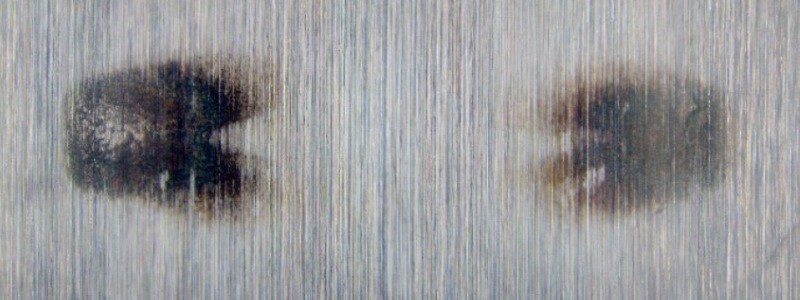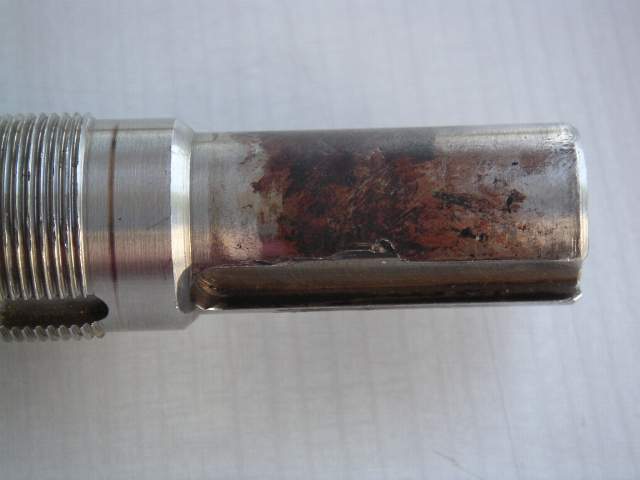Fretting is a phenomenon that causes damage when metal surfaces come into contact through repeated rubbing or cyclic sliding motion. The friction-induced damage from fretting results in material transfer and corrosion, leading to mechanical wear.
At first, this description may sound similar to galling but these two processes have fundamental differences. Galling generally refers to the wear damage associated with gross relative motion on a much larger scale than the small amplitude relative motion associated with fretting contacts.
Let’s discover the reasons behind the fretting process, and how to protect mechanical systems from this type of wear.
What Is Fretting Wear and When Does It Occur?
Fretting is a type of wear that stems from low-amplitude oscillating motion or vibration under high contact pressure. These small cyclic movements and micro-sliding generate stresses on the contact surface, degrading the metals over time.
Fretting is a combination of adhesive and abrasive wear. The oscillatory motion causes fatigue wear which is enhanced by the adhesion of contact surface asperities. This bond is short-lived though, as it will be broken shortly after by the small movements, resulting in wear debris.
If the debris and/or surface subsequently undergo a chemical reaction, mainly oxidation, the mechanism is termed fretting corrosion. Fretting leads to increased surface roughness and micropits, which further reduces the fatigue strength of the components.
Many machine components and systems are exposed to small movements causing fretting. These small oscillations can be from parts intended to move by design (e.g. camshafts and leaf springs) or not intended to move (e.g. bolted flanges, riveted lap joints and keyways) and caused by various external factors.
The relative sliding motion has a small amplitude, generally ranging from micrometeres to millimetres but in some cases, it can also be measured in nanometres. Fretting can cause serious damage even with a small friction path.
Smooth surfaces are more prone to fretting wear since the stress at the contact points between the mating surfaces is amplified.
The term fretting wear was considered to be interchangeable with fretting corrosion. Interestingly, fretting wear can also occur in a vacuum (space mechanisms for example) and in materials that do not oxidise, such as gold and platinum. This is why it’s important to cover the terms fretting corrosion and fretting fatigue separately, although these phenomena most often appear in tandem.
Fretting Corrosion

Fretting corrosion develops due to the removal of protective oxide layers on the metal surfaces, exposing fresh metal to corrosive elements. Wear debris created by the constant sliding motion accelerates the corrosion process since the particles cannot escape contact, causing abrasive wear and subsequent oxidation of the freshly exposed metal, continuing the process and leading to elevated wear volumes.
Corrosion depends on the material’s inertness. In the case of steel, iron oxide is harder than the steel itself and thus it acts as an abrasive and causes a lot of damage to the surfaces.
Fretting corrosion may occur in metals such as steel, aluminium, cast iron, and other non-ferrous metals but also in polymers and ceramics. The color of debris particles for fretting corrosion appears different from normal corrosion. Aluminium corrodes to a white color under normal conditions and turns black with fretting corrosion, whereas steel becomes gray and reddish brown respectively.
Examples of fretting corrosion involve wind turbine pitch bearings (false brinelling) wherein the wear mechanism oscillates and orthopedic implants when the two materials in contact are in relative motion with each other.
- Personal account manager
- Quality assurance
- Payment terms for companies
- On-time delivery by Fractory
Fretting Fatigue
The contact area of the two materials is affected by cyclic friction stress, resulting in fretting fatigue. Fatigue cracks start initiating in the fretting zone, propagating further into the material. The surface of the metal has a high contact load and maximum friction stress whereas the inside of the metal has lower stress values.
Thus, fretting fatigue is different from plain fatigue failure. There is, however a correlation between the two as fretting fatigue life is estimated from plain fatigue life data. Additionally, fretting fatigue strength is usually half or less than its plain fatigue strength.
Surface hardness plays an important role in fretting fatigue. Contact surfaces of hard metals result in cold welding of their asperities, subsequently shearing and generating wear debris (fretting corrosion). Whereas if a soft and hard metal are in fretting contact, fretting fatigue wear is more likely to occur. The asperities of the harder metal will indent the softer metal, resulting in plastic deformation to the softer metal and eventually material loss.
An example of fretting fatigue is seen in mechanical joints from aircraft engine blades wherein catastrophic mechanical failure may occur if left unchecked.
Factors That Affect Fretting
-
Load – The magnitude and position of the load are some of the key factors that promote fretting. Uneven loading on mechanical parts may lead to concentrated local stress at specific areas on the metal surface.
-
Environment – The consequence of subjecting the mechanisms to poor temperature and relative humidity is fretting corrosion from oxidation. It’s highly likely that a high wear rate occurs when metal surfaces are in a corrosive environment or around corrosive agents.
-
Material Properties – Ductility, plasticity, surface roughness, and inertness are some properties that affect how surfaces react under load and contact.
-
Motion – Small movements from the sliding amplitude and number of cycles between two metal surfaces affect the amount of fretting wear.
-
Surface – Fretting behavior is greatly influenced by the material’s surface finish, coatings and lubrication.
How to Reduce Fretting
- Avoiding fretting altogether – This can include design changes, dampening any vibrations, and making certain that all joints are properly tightened.
-
Fretting systems testing – Trial runs may be used in a controlled environment to address fretting issues in specific mechanisms.
-
Coatings & lubricants – Coating and lubrication add another layer of protection from friction, improving fretting resistance. Steel for example is susceptible to fretting if paired with steel. It can be paired with steel coated in cadmium, indium, lead, tin, or silver to reduce fretting. However, regarding lubricants, they might get squeezed out at the contact area, still resulting in metal-to-metal contact. In some cases, lubricants can even have the opposite of the desired effect as a lower friction coefficient may lead to more movement.
-
Material hardness – Hardness generally influences the friction coefficient of the material. To improve the material’s hardness, surface and heat treatments can be used. Another common method is shot peening which is often performed during repairs, improving strength and reducing stress.
-
Metal selection – It is sometimes optimal to use two materials with different ductility or ‘softness’. A pair of soft and hard metals are proven to have less fretting damage compared to two hard metals since the softer metal ‘flows’ rather than ‘rubs’ when in contact.
-
Environment – Favorable conditions such as a controlled environment during operation and proper storage reduce unnecessary moisture to the material, reducing oxidation.
-
Loose metallic inserts – Some instances use loose metallic inserts to avoid fretting or surface contact such as using thin copper plates for titanium surfaces.
-
Rubber – If the application allows for it, vibrations can be absorbed by rubber while preventing slip zones at the same time.




